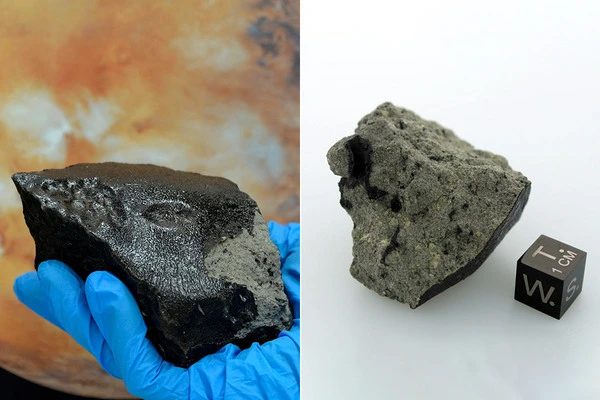Martian meteorites have been found to contain a diverse range of organic compounds. These organic compounds are important because they could provide clues to whether or not life ever existed on Mars. One of the most famous Martian meteorites, known as ALH84001, was discovered in Antarctica in 1984. It contains microscopic structures that some scientists believe are fossilized bacteria, although this is a topic of ongoing debate. The meteorite also contains a variety of organic compounds, including amino acids, which are the building blocks of proteins.
Unraveling the origin stories of the organic compounds in the Tissint meteorite can help scientists understand whether the Red Planet ever supported life, as well as Earth’s geologic history. An international team of researchers led by Technical University of Munich and Helmholtz Munich’s Philippe Schmitt-Kopplin and including Carnegie’s Andrew Steele discovered a wide range of organic compounds in the Martian meteorite Tissint. Their findings were published in Science Advances.
Tissint, a Martian meteorite that crashed landed in Morocco more than 11 years ago, is one of only five that have been observed as they fell to Earth. Pieces of it were discovered scattered across the desert about 30 miles from the town that bears its name.
Mars and Earth share many evolutionary similarities. And, while life evolved and thrived on Earth, the question of whether it ever existed on Mars is a very hot research topic that necessitates a deeper understanding of our neighboring planet’s water, organic molecules, and reactive surfaces.
Schmitt-Kopplin
This Martian rock sample was formed hundreds of millions of years ago on our neighboring planet and was launched into space by a violent event. Unraveling the origin stories of the organic compounds in the Tissint meteorite can help scientists understand whether the Red Planet ever supported life, as well as Earth’s geologic history.
“Mars and Earth share many evolutionary similarities,” said lead author Schmitt-Kopplin. “And, while life evolved and thrived on Earth, the question of whether it ever existed on Mars is a very hot research topic that necessitates a deeper understanding of our neighboring planet’s water, organic molecules, and reactive surfaces.”
Organic molecules contain carbon, hydrogen, oxygen, nitrogen, sulfur, and sometimes other elements. Organic compounds are commonly associated with life, although previous Martian meteorite research demonstrated that they can be created by non-biological processes, referred to as abiotic organic chemistry.

“Understanding the processes and sequence of events that shaped this rich organic bounty will reveal new details about Mars’ habitability and potentially about the reactions that could lead to the formation of life,” added Steele, who has done extensive research on organic material in Martian meteorites, including Tissint, and is a member of both the Perseverance and Curiosity rovers’ science teams.
The researchers were able to thoroughly examine the meteorite’s organic inventory, revealing a connection between the type and diversity of organic molecules and specific mineralogy. Their efforts yielded the most comprehensive catalog of the variety of organic compounds found in a Martian meteorite or in a sample collected and analyzed by a rover. This research revealed details about how processes in Mars’ mantle and crust evolved, particularly abiotic organics formed from water-rock interactions.
The abundance of organic magnesium compounds, a suite of organic molecules not previously seen on Mars, offers new insights into the high-pressure, high-temperature geochemistry that shaped the Red Planet’s deep interior and suggests a link between its carbon cycle and mineral evolution.
According to the researchers, samples returned from Mars by future missions will provide an unprecedented amount of information about the formation, stability, and dynamics of organic compounds in real Martian environments.
















